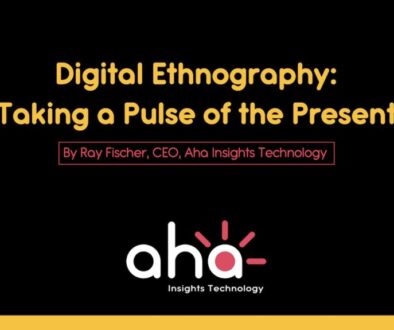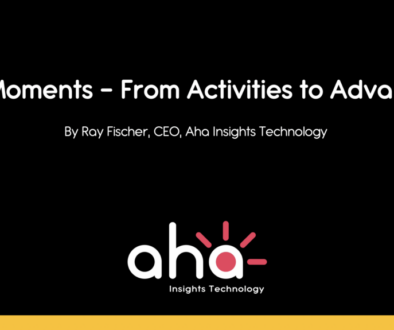Why Larger-Scale Qualitative Research Outperforms Quantitative Studies
In a world driven by data, many decision-makers default to large and extra-large sample quantitative research for its perceived precision and credibility. But behind the numbers lurks a growing issue that has not been resolved: fraud, inaccuracy, and superficial insight. Meanwhile, large-scale qualitative studies—once dismissed as too small or subjective—are emerging as a more reliable, human-centered alternative. Primarily, when conducted with 100+ participants, qualitative research delivers depth and authenticity that quant lacks.
Here’s why large-scale qualitative research can be the smarter choice.
1. Qual Recruits are More Trustworthy in a Fraud-Prone Landscape
Quantitative studies—especially large ones—are increasingly vulnerable to bots, speeders, and fake responses. The broader the sample, the harder it becomes to ensure authenticity.
In contrast, qualitative methods like video interviews, open-ended prompts, and live conversations naturally deter fraud. You can see, hear, and sense a participant’s authenticity. At scale, this means richer, more human data you can trust. Plus, qual recruits, depending on your source of sample, are much more heavily vetted and profiled, complete with Real ID and extensive background data on respondents proving that they are who they say they are.
2. You Still Get Projectable Scale—with Much More Depth
Traditional qualitative research often had small sample sizes, which limited its projectability. However, digital platforms now enable comprehensive qualitative studies with 100 or more carefully screened participants across key segments.
That gives you directional confidence, but with much greater depth—authentic voices, emotional nuance, spontaneous ideas, and contextual insights that quant surveys can’t replicate. While there are fewer respondents than a traditional large-scale quantitative study, the data is projectable.
3. Qual Uncovers the Why, Not Just the What
Quant tells you what’s happening—say, 62% dislike a product. But why? Is it pricing, usability, or support? Can you rely on quant respondents to give qual depth? No.
Qualitative studies thrive in this “why” space. Participants explain their thoughts in their own words, revealing themes, emotions, and feedback that drive real understanding. When dozens echo the same insight, patterns emerge with clarity and power. And AI makes themes and insights even more evident.
4. Live Conversations Adapt in Real Time
In quant surveys, questions are static. Misinterpretation by respondents can ruin an entire study without notice.
In qualitative studies, especially those with live or asynchronous video, you can clarify, rephrase, or follow up instantly. This flexibility uncovers more profound insights and reduces blind spots, making the data more reliable.
5. Qual Captures Emotion and Language, Not Just Data
Emotions don’t fit in a 5-point Likert scale. If you’re trying to understand how a brand feels to someone, how a product fits their life, or how a message resonates, quant won’t get you there.
With large-scale qual, you hear tone, see facial expressions, and absorb the actual language people use. You learn what they care about, what excites or frustrates them, and how they interpret your offering. A skilled moderator can turn these conversations into gold.
6. Qual Delivers Segment-Level Insight Without Guesswork
Quant can reveal surface-level preferences by segment (e.g., Gen Z prefers Brand A), but not the meaning behind those preferences.
In large-scale qual, you compare reactions by segment and hear the why directly. How do income levels affect perceptions of value? What metaphors do women use versus men? This kind of segment-level texture helps you design better strategies for each target group.
7. From Slow to Fast: AI Has Transformed Qual
Qualitative research has long been valued for its richness—but often viewed as slow and labor-intensive to analyze. That’s changing. Today, AI empowers human researchers to surface themes, emotions, and insights with unprecedented speed, reducing bottlenecks and bias. While AI accelerates the process, expert interpretation remains essential to ensure meaning, context, and strategic value.
8. Qual Builds Empathy, Not Just Evidence
One of the most powerful (and underrated) benefits of large-scale qual is empathy. When stakeholders see and hear real people talk about their experiences, it changes perspectives. Strategies shift from theory to lived reality—the result: deeper buy-in and more human-centered decisions.
The Bottom Line: When Bigger Isn’t Better
Extra-large quant studies offer reach, but often at the expense of truth. Between rising fraud, static formats, and superficial insights, it’s clear that bigger isn’t always better.
Large-scale qual research—done with 100+ engaged participants—offers something more powerful: depth, trust, and human truth.
Next time you plan a study, don’t just ask how many people you’ll reach—ask how well you’ll understand them.
Why Aha Is the Best Platform for Large-Scale Qual
Aha is built for modern qualitative research at scale. Our platform enables engagement with 100+ authentic participants across diverse segments—delivering insights that are both broad and deep.
We combine a wide array of flexible discussion tools, projective techniques, live and asynchronous video-based engagement, and fraud-resistant verification methods to ensure trustworthy, emotional, and actionable data. With Aha, you can explore the “why” behind behaviors, gain a deep understanding of your audience, and achieve multiple goals at once with validity.
If you’re ready to go beyond just numbers and into verified human insight, Aha is your trusted partner for large-scale qual…delivering numbers with in-depth reasons why.





